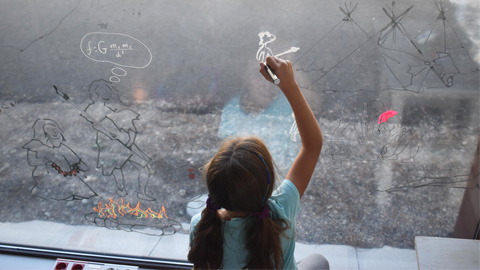An interactive exhibition details human life some 40,000 to 10,000 years ago

13/11/2017
“Humans moderns, 10.000 generacions” ("Modern Humans, 10,000 Generations") recently opened its doors to the public at the Espai Orígens of Camarasa (La Noguera, Lleida). The exhibition, based on interactive contents, travels through the history of hunter-gatherer societies living in the area during the Upper Palaeolithic, some 40,000 to 10,000 years ago, and shows how today we can still recognise parts of them in us.
The Noguera region includes a large register of Neanderthal communities, the first settlers of the region, and an excellent example of this is the Roca dels Bous settlement in Sant Llorenç de Montgai (Camarasa). However, 40,000 years ago all traces of Neanderthals disappeared, to be substituted by what is known as anatomically modern humans (Homo sapiens sapiens). There is also an ample archaeological register of their daily activities at the Cova Gran de Santa Linya, currently the most important site from the period.
Precisely these modern humans are the object of the exhibition which recently opened its doors. Organisers propose a journey through the senses (hearing, smell, sight and touch) in order to discover how we lived 10,000 generations ago. Present and past intertwine like threads which can lead us to recognise ourselves in a variety of our ancestors' aspects and behaviours.
Each exhibit piece presents a challenge which must be overcome and allows visitors slowly to discover aspects when define us as humans and as a species. The tools used in daily activities can be seen and touched, and visitors discover why and how they were used. They can also create some of their own.
An imaginary food pantry reveals common foodstuff from the past alongside those we commonly consume today. Another part of the exhibition consists of a living area. Known as "La Cabana", it transports visitors back to an ancestral world in which their senses will permit them to enjoy stories around a fire, which most surely occupied a great part of the long nights in which our ancestors lived in the territory of the Noguera region.
All of the elements are accompanied by specific digital applications, new communication and interaction formats which connect the public with the contents of the exhibition.
“Humans moderns, 10.000 generacions” is a co-production by the Centre for the Study of Prehistoric Archaeological Heritage-CEPAP of the Universitat Autònoma de Barcelona (CEPAP-UAB) and the Association of Historical Heritage Research and Dissemination (ARDPH). The sites used for this exhibition form part of the UAB Archaeology and Palaeontology Campus.
The exhibition will be open to the public during one year and can be visited in Catalan, Spanish, English and French.
More information: http://espaiorigens.es/visita-la-exposicio-humans-moderns-10-000-generacions/